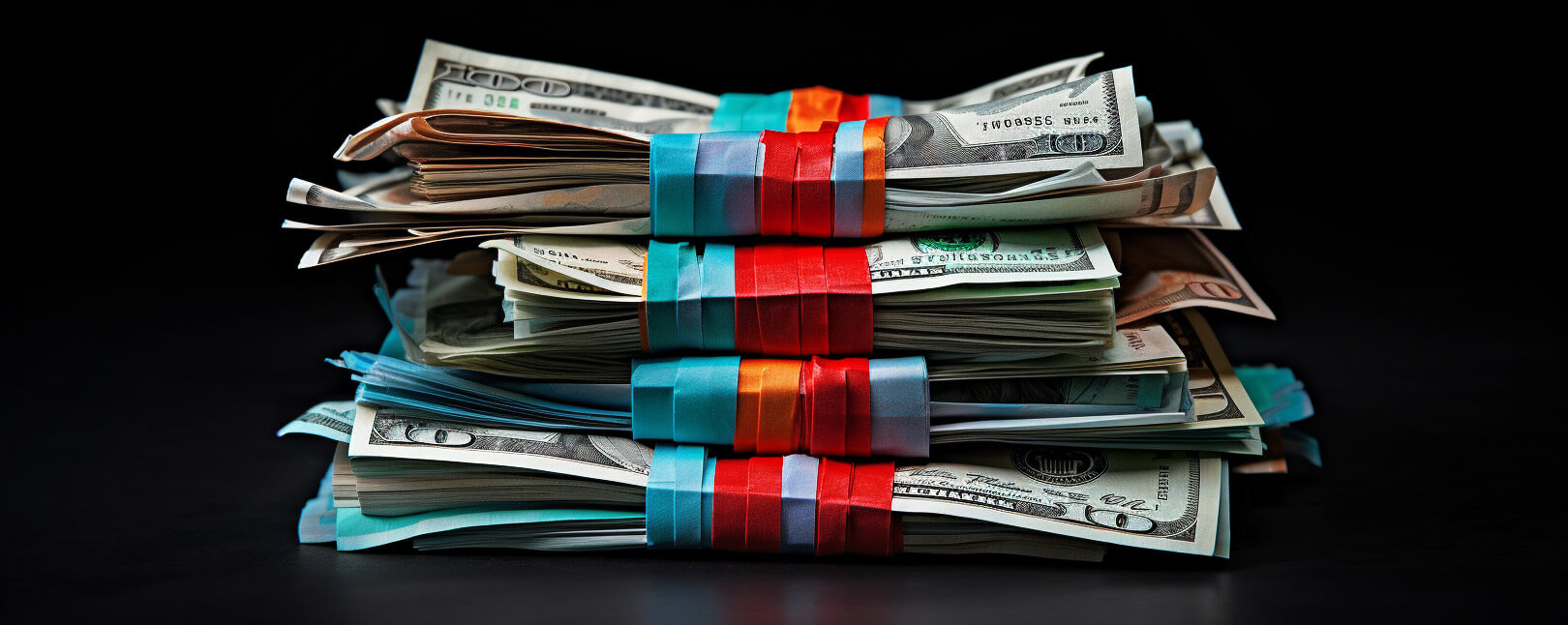What is a High-Risk Business? What Does This Mean for Your Bottom Line?
“High-risk business” is a designation applied by payment-card processors. It’s usually based on two general criteria: your industry (some verticals aren’t as stable as others) and your specific situation (things like credit history, past profitability, etc.).
The first category refers to more general and superficial characteristics that are based on the type of business you have. Traits from the second category are more directly related to your history and business practices.
A high-risk business can experience challenges that other businesses don’t have to contend with. For instance, you will be forced to use a high-risk merchant account. This typically means more restrictions and significantly higher processing fees. You may also see limits on the volume of sales you can process, and the places to which you can ship goods.
There are some verticals and product categories that are automatically designated as high risk. If you’re operating in one of these spaces, there’s not much you can do about this situation. If you’re on the verge of being labeled as high risk due to other factors — like a high chargeback rate, for instance — you need to move fast and take action now.
Recommended reading
- The Chargeback MATCH List: How to Avoid Being Blackisted
- Merchant Account Reserves: What You Need to Know in 2024
- High-Risk Merchant Accounts: The Best Providers of 2024
- Visa Dispute Monitoring Program: What is the VDMP?
- Basis Points: What Do They Say About Your Financial Health?
- Mastercard Excessive Fraud Merchant Program, Explained

What is a High-Risk Business?
- High-Risk Business
A high-risk business is an operation that, for one or more reasons, is perceived by credit card processors or financial institutions to represent an elevated risk for chargebacks.
[noun]/hī • risk • biz • nəs/In simple terms, high-risk businesses are merchants who are perceived to be at a greater risk of financial failure.
There is a certain amount of risk associated with all payment processing and eCommerce in particular. There’s no way around that. But, while merchants assume a lot of the risk directly, acquirers and payment processors can be impacted, too.
Processors are ultimately responsible for all credit card transactions conducted by their merchants. For instance, let’s say a merchant sees a sudden surge of chargebacks. These chargebacks are the result of some shady practice the merchant was involved in, and the amount of money for which they’re liable is greater than the assets they have on hand. In that case, the merchant’s acquiring bank will be forced to cover the shortfall.
Everyone wants the best possible return on their investment. So, it makes sense that financial institutions would either try to avoid risky situations or charge more for assuming greater risk. Unsurprisingly, merchants who fall under the high-risk umbrella are required to operate from a high-risk merchant account. This means you’ll have fewer (and generally pricier) options for card processing.
What Makes a Business High Risk?
So what is the difference between a low- and a high-risk business? As we noted above, your business could be considered “risky” for multiple reasons.
Determining a business’s overall risk level is based on multiple compounding factors. Here are a few examples of factors that differentiate between the two types of risk labels:
| Low-Risk Merchant | High-Risk Merchant | |
| Average monthly sales volume | Less than $20,000 | Over $20,000 |
| Average credit card transaction | Less than $500 | Over $500 |
| Number of currencies accepted | One | Multiple |
| Offer recurring (subscription) payments | No | Yes |
| Placed on MATCH list/history of excessive chargebacks | No | Yes |
| Main product offering | Books, office supplies, clothing, home goods, etc. | Software, digital, tickets, seasonal items, etc. |
| Based in or sell to a high-risk country/region (anywhere outside the US, EU, Canada, Japan, or Australia) | No | Yes |
Each payment processor has its own set of guidelines. One processor might label you high-risk while another may not. Once a processor evaluates your business, they'll make an “either/or” decision as to whether you qualify as high risk.
High-Risk Industries
Processors may be concerned about high-risk product categories. This is based on trends within the industry as a whole. They calculate factors like fraud instances, returns, debit card chargebacks, credit card chargebacks, and sales volume. This information is used when classifying business types. A merchant category code (or “MCC”) identifies the category your business falls under.
Some of the high-risk products and industries usually flagged by processors include (but are not limited to):
- Casinos or online gaming
- Prepaid debit cards
- Calling cards and PBX VoIP systems
- Pharmaceuticals and online drug providers
- Tobacco/E-cigarettes/cannabis products
- Telemarketing sales
- Adult entertainment and dating services
- Airlines, accommodations, and ticketing agents
- Subscription services (magazines, collectibles, etc.)
- Financial counseling/credit repair/debt reduction
- Recurring billing/subscriptions
- Timeshares
- Cryptocurrency
These verticals tend to be more susceptible to returns, chargebacks, and fraud. Despite the rather ominous-sounding name, however, operating a high-risk business isn’t inherently a bad thing.
Keep in mind that some verticals present an elevated financial risk, but big risks can sometimes offer big payoffs. Merchants who choose to function in high-risk categories do so with the confidence that the reward will offset the extra hassle and expense of a high-risk merchant account.
Why Does Your Risk Factor Matter?
Understanding why banks and payment processing providers classify businesses as high risk is crucial. But what implications does this have for high-risk companies in need of payment processing solutions?
Here are some key points to consider:
Some Risk Factors You Can Control
Gaining a bit of clarity regarding high-risk classifications and their implications can empower you to make informed decisions and anticipate challenges. What if your industry isn’t considered “high risk,” though? Are you in the clear?
No. You can still be classified as a high-risk business, no matter your MCC. Processors and financial institutions look at how typical businesses in your vertical perform and examine your business specifically. They want to know that working with you is a reasonably safe investment.
There are a lot of factors to consider here. Your business may be considered high risk if:
- Your business has been put on the MATCH (terminated merchant) list within the last 5 years.
- You are a new business with very little credit card processing history.
- You have a bad credit card history (late payments, insufficient collateral for loans, etc).
- You sell products or services that usually result in high-dollar transactions.
- You experience a higher-than-average amount of returns/refunds.
- Your chargeback ratio is too high.
You can take steps to keep your low-risk business from becoming a high-risk headache. The keys are to follow business best practices and provide superior customer service.
One of the best ways to keep from earning a high-risk label is to avoid chargebacks whenever possible. A chargeback is essentially a forced credit card payment reversal facilitated by the cardholder’s issuing bank. When a chargeback occurs, your business loses:
- Profits from the sale
- Any merchandise that has already been shipped to the buyer
- Shipping and restocking fees
- Interchange fees
- Chargeback administration fees levied by the bank
Merchants who amass a high volume of chargebacks are in danger of losing their current processing agreement. If your processing agreement has been terminated because of excessive chargebacks, you will automatically be placed in the “high-risk business” category. This puts you in danger of losing the ability to accept credit cards at all.
Is Your Business at Risk?
Are you worried about being labeled a “high-risk business” due to the number of chargebacks you sustain? Contact Chargebacks911® today. Our chargeback management professionals can help you assess your risk and determine what you can do to keep post-transaction threats under control.
FAQs
What is a high-risk business?
A high-risk business is any business that credit card processors feel represents a higher-than-average risk of financial failure.
What makes a business high-risk?
Certain industries are automatically designated high-risk based on the historical performance of the entire vertical. Individual merchants can also be placed in this category based on multiple factors, such as a previously terminated merchant account, a bad or minimal credit card processing history, or a high chargeback rate.
Is there such a thing as a “low-risk” business?
Sort of. A “low-risk” status is more or less the default setting; this refers to any business that is not considered high-risk.
Which industry has the highest risk?
It’s difficult to determine. However, some MCCs (merchant category codes) that pose elevated risks include gaming, prepaid debit cards, pharmaceuticals, tobacco/E-cigarettes/cannabis products, and ticketing and events.
What can I do to avoid the high-risk designation?
If you’re not in a high-risk business category, the best way to avoid that label is to keep your chargeback ratio low by preventing as many chargebacks as possible.
What are high-risk business activities?
High-risk business activities refer to ventures that financial institutions and payment providers perceive as having a higher likelihood of chargebacks, legal challenges, or financial instability. These industries might include adult entertainment, online gambling, and cryptocurrency trading. Their perceived risk leads to stricter regulations, higher processing fees, and challenges in securing financial services.
What is a high-risk product?
A high-risk product is one that presents a significant chance of legal liability, financial loss, or safety concerns to sellers or consumers. These products might include items with a high probability of causing injury or those prone to regulatory scrutiny. As a result, they often face stringent regulations, insurance requirements, and potential legal challenges.














